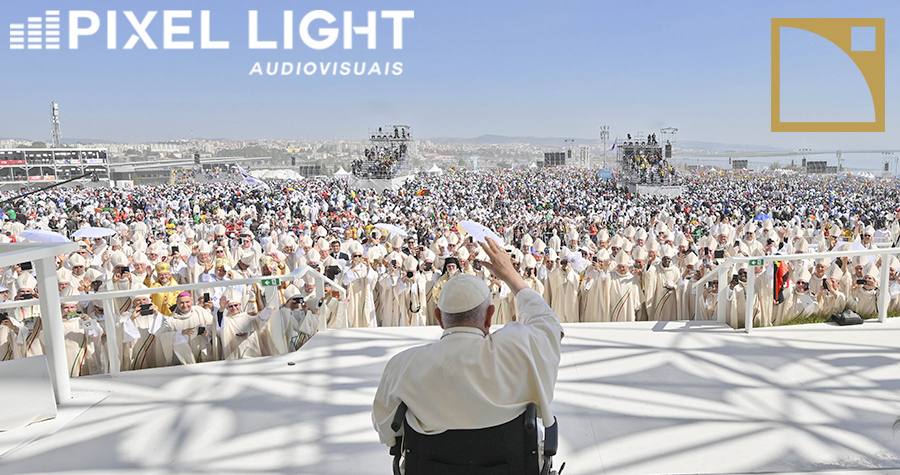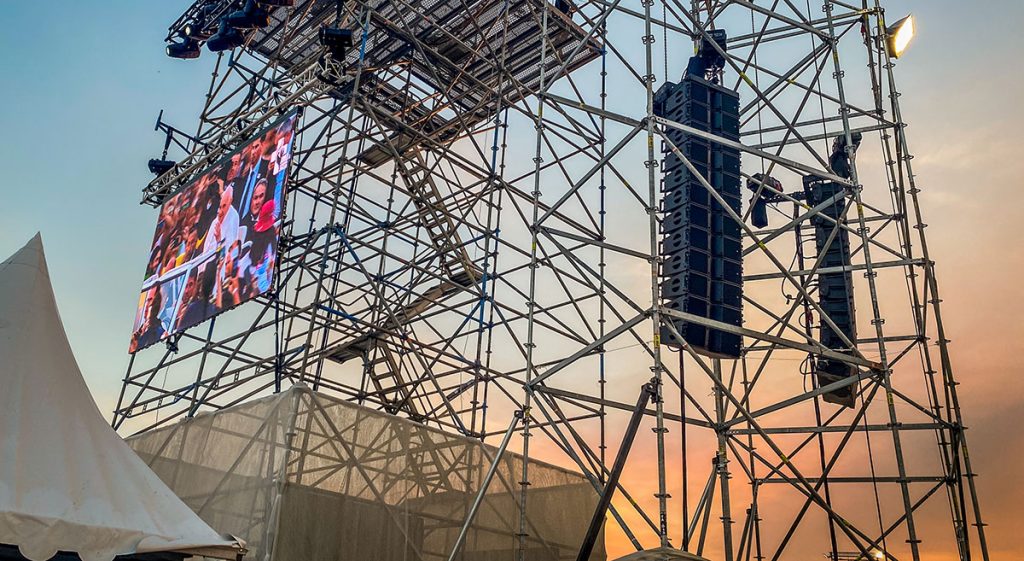World Youth Day was first celebrated in 1985 at the invitation of Pope John Paul II, who organised a gathering in Rome on Palm Sunday to celebrate the Youth Jubilee of the Holy Year of Redemption. Sixty thousand young Catholics were expected, but 250,000 people from different countries came. Today, the event is celebrated every three to four years in a different country. In 2023, World Youth Day took place over six days in Lisbon, attracting over 1.5 million attendees.
The largest event ever to be hosted in the city of Lisbon, the expansive, 100-hectare riverside Parque Tejo served as the primary location, with a massive stage and a series of screens and audio systems set up along a 3.5km-long open-air space to accommodate the international audience. Supporting the event with concert audio capable of serving the massive crowds was an L-Acoustics K Series sound system, designed and deployed by Pixel Light.
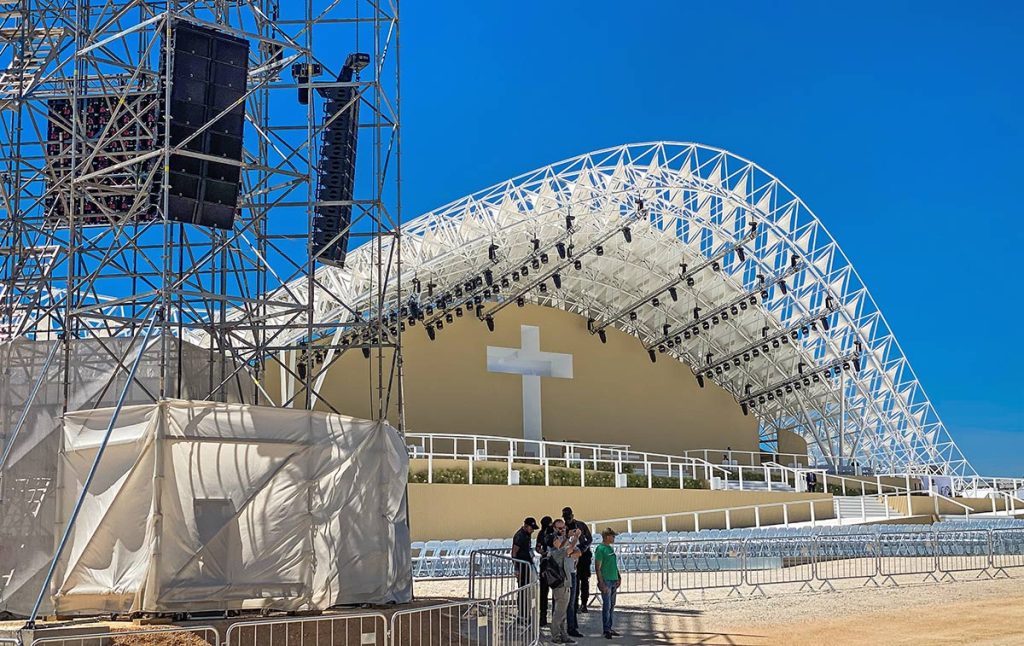
Headlining the event, Pope Francis delivered a message of hope and unity to the world’s youth from a 40-metre-wide and 24-metre-high stage conceived by architect João Matos. For Pixel Light, the challenge of creating a sound system that could encompass such an audience while maintaining impeccable speech clarity was familiar.
An L-Acoustics rental partner since 2016, Pixel Light has a solid foundation of successful collaboration on major projects such as the Eurovision Song Contest 2018. For World Youth Day, Pixel Light’s daunting challenge was to ensure comprehensive audio and video coverage to 1.5 million people over a sprawling 3.5 km expanse, enabling everyone to fully experience speech clearly, no matter their distance from the stage.
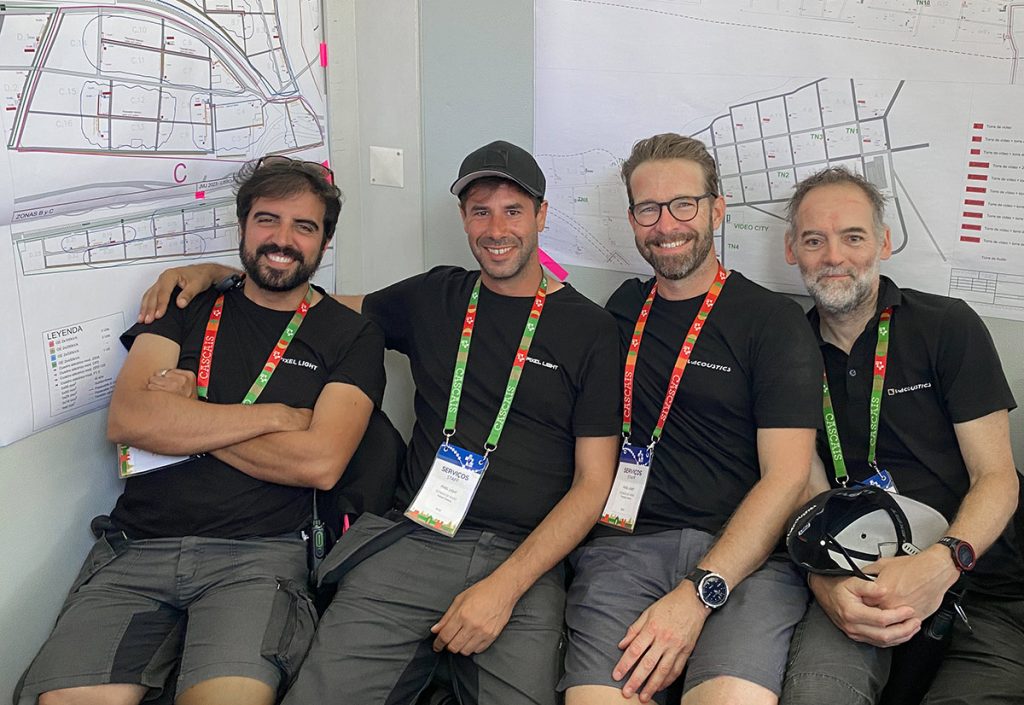
“Our goal was to achieve a minimum of 97 dB SPLA, considering the outdoor environment, wind, and the sheer number of attendees,” explains Rafael Pereira, System Engineer and Sound Designer at Pixel Light.
“Soundvision was instrumental in helping us predict coverage and balance the SPL across the entire audience area.”
Pixel Light opted exclusively for L-Acoustics products. Given the magnitude of the undertaking, this allowed them to create a comprehensive and consistent solution. “I believe we used every available piece of L-Acoustics equipment in Europe,” says Sérgio Antunes, Project Manager for World Youth Day. “This decision not only met our needs but also significantly contributed to the project’s resounding success.”
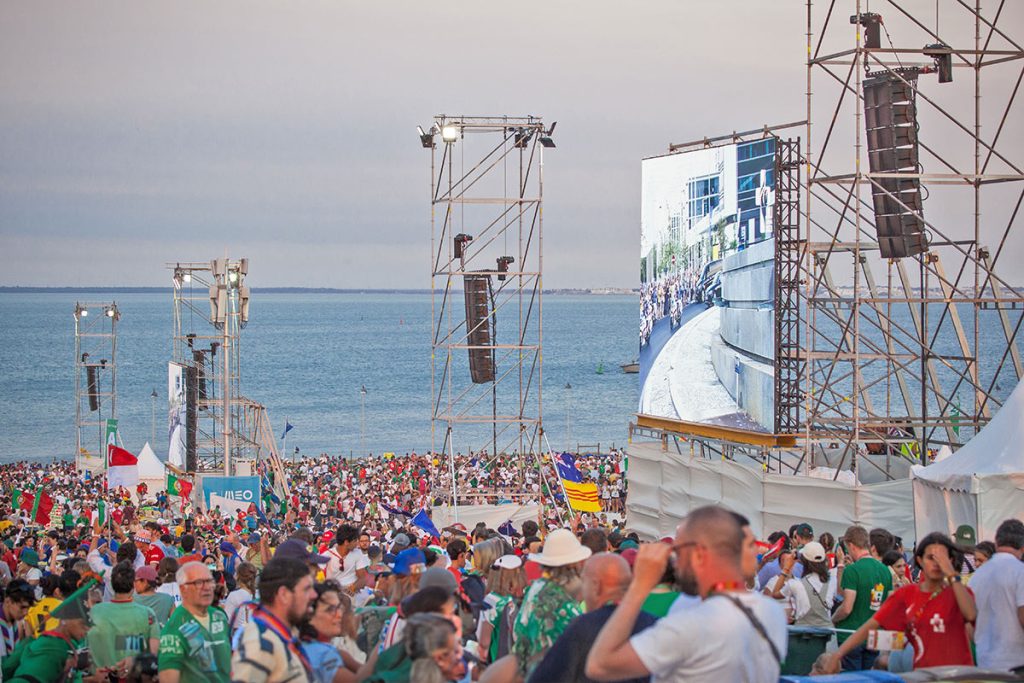
Rafael broke up the massive space into more than 72 parcels of 5,000 to 10,000 square metres, each with its own screen and sound system. “I never thought it would be possible to cover a space like this with just 109 towers,” says Rafael Pereira.
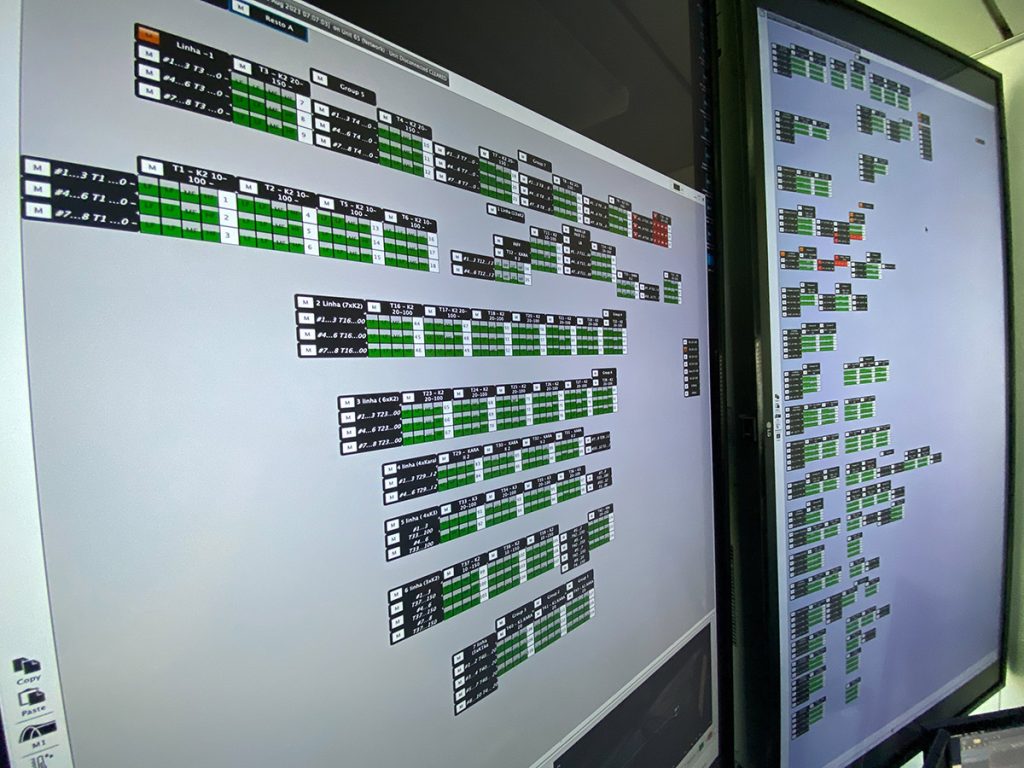
“I decided to try modelling it in Soundvision anyway, and I couldn’t believe it. It was possible. I used this 3D Soundvision model to show the client how it could be done, which helped convince them to award us the project.”
In all, Pixel Light deployed a record-breaking total of 1,100 L-Acoustics loudspeakers both on stage and over an incredible 109 delay towers. This powerful assembly included 128 K1 line source speaker units, 272 K2, and 132 K3. Additionally, 528 Kara modular line source speakers were deployed, along with 24 dV-DOSC. The system was driven by 196 LA12X and 93 LA8 amplified controllers. Pixel Light built a network of audio and control systems using 103 kilometres of fibre, and more than 300 switches to connect everything together.
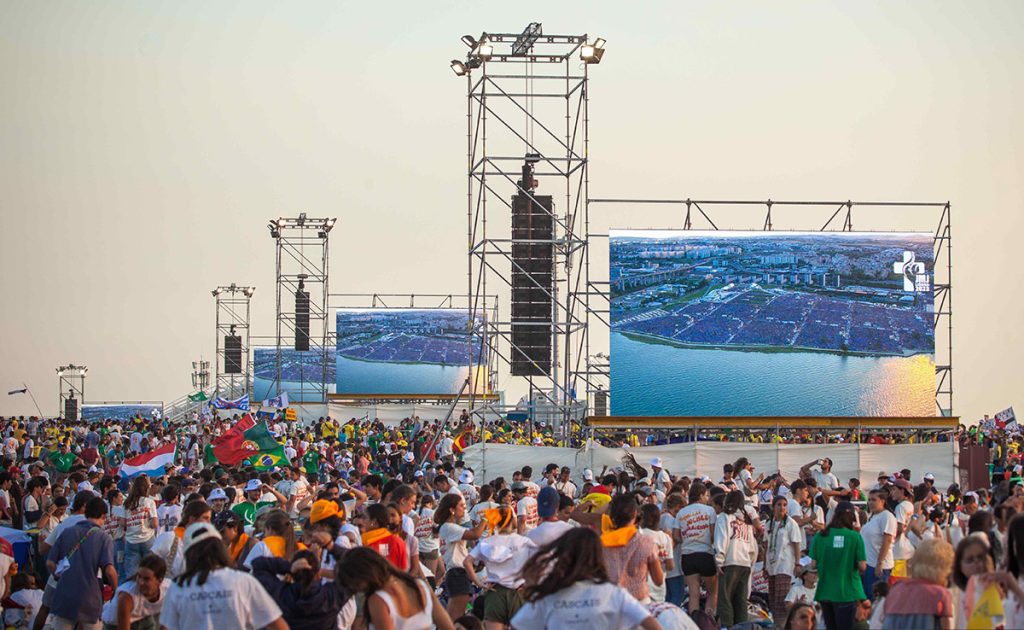
Pulling from a pool of several different L-Acoustics speaker lines, Rafael Pereira prioritised even tonal balance and SPL with the objective of providing speech intelligibility in the speech range. “I was limited to one LA-RAK per delay tower.
Taking this into account and to facilitate load-in/load-out, I created five varying types of arrays that included four K1 over six Kara; eight K2; 12 Kara,12 K3; or four V-DOSC over six dV-DOSC.” It took a team of 24 people and six days to fly the sound system. Two days were required to set up the network, and then two more days were used for tuning and rehearsal.
“From the onset, we knew this project was destined to be colossal in size, but the final outcome surpassed even our wildest imaginations. Our dedicated team ensured the best possible coverage, delivering an unrivalled audio experience that resonated with every single one of the 1.5 million attendees. From the start of the event to its conclusion, the feedback from the production team was nothing short of positive, not a single audio complaint was registered,” concludes Sergio Antunes.
More on Pixel Light and on L-Acoustics



